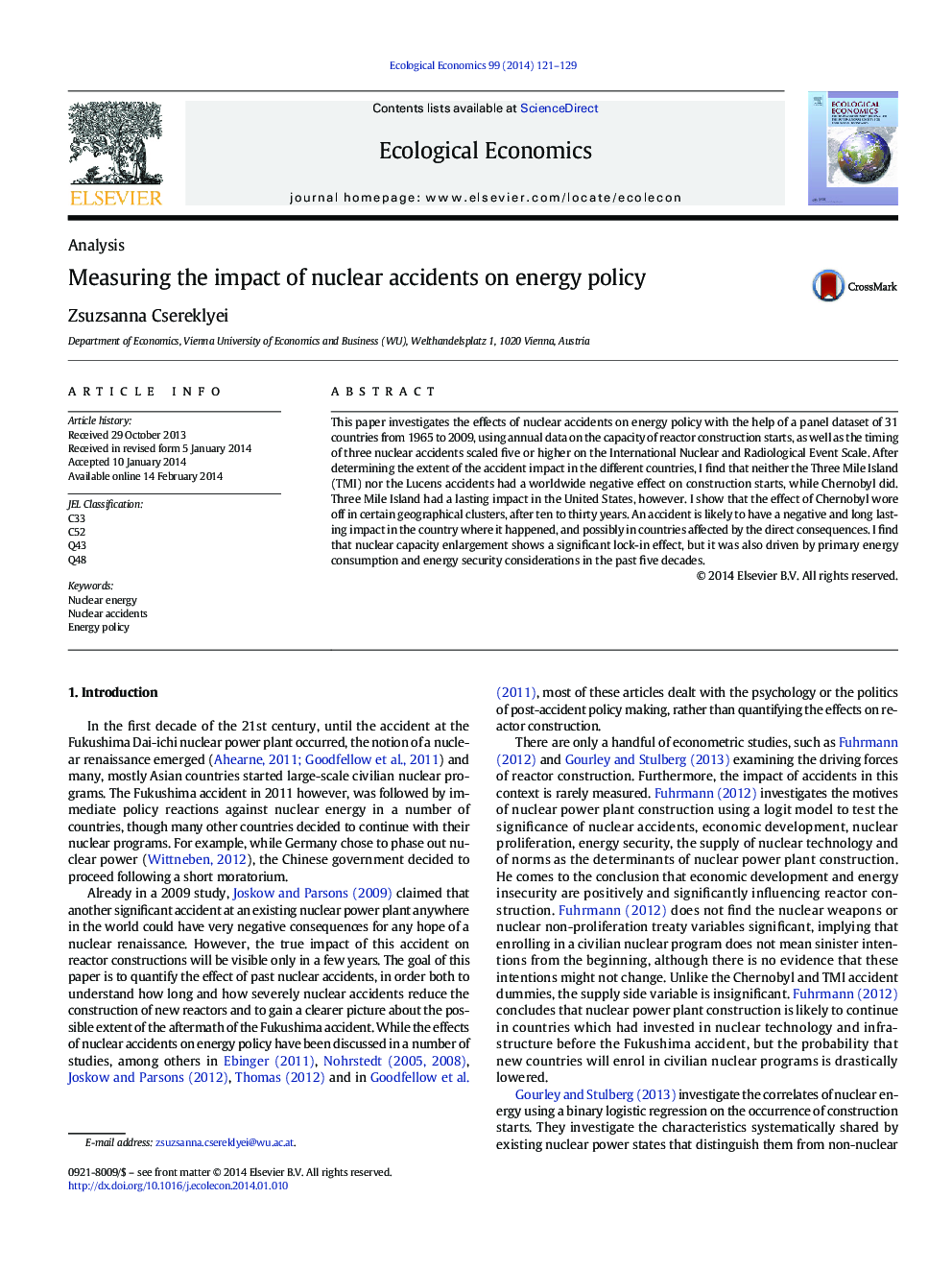| Article ID | Journal | Published Year | Pages | File Type |
|---|---|---|---|---|
| 5049839 | Ecological Economics | 2014 | 9 Pages |
â¢The paper measures the impact of nuclear accidents on reactor construction.â¢Lasting impact found in certain geographical clusters, affected by the accident.â¢The negative impact of an accident may wear off from 10 to 30 years.â¢Construction is driven by energy use, energy security, and by the lock-in effect.
This paper investigates the effects of nuclear accidents on energy policy with the help of a panel dataset of 31 countries from 1965 to 2009, using annual data on the capacity of reactor construction starts, as well as the timing of three nuclear accidents scaled five or higher on the International Nuclear and Radiological Event Scale. After determining the extent of the accident impact in the different countries, I find that neither the Three Mile Island (TMI) nor the Lucens accidents had a worldwide negative effect on construction starts, while Chernobyl did. Three Mile Island had a lasting impact in the United States, however. I show that the effect of Chernobyl wore off in certain geographical clusters, after ten to thirty years. An accident is likely to have a negative and long lasting impact in the country where it happened, and possibly in countries affected by the direct consequences. I find that nuclear capacity enlargement shows a significant lock-in effect, but it was also driven by primary energy consumption and energy security considerations in the past five decades.
